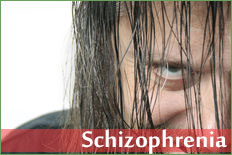Health Centers > Mental Health Center > Mental Disorders > Personality Disorders > Avoidant Personality Disorder (AvPD, APD)
Avoidant Personality Disorder
Introduction
A personality disorder is a severe disturbance in the characterological constitution and behavioural tendencies of the individual, usually involving several areas of the personality, and nearly always associated with considerable personal and social disruption. Personality disorder tends to appear in late childhood or adolescence and continues to be manifest into adulthood. It is therefore unlikely that the diagnosis of personality disorder will be appropriate before the age of 16 or 17 years. General diagnostic guidelines applying to all personality disorders are presented below; supplementary descriptions are provided with each of the subtypes.
Avoidant Personality Disorder
- Introduction
- Epidemiology and Phenomenology
- Causes
- Diagnostic Guidelines
- ICD-10 Criteria
- Diagnostic criteria (DSM-IV-TR)
- Differential Diagnosis
- Frequency
- Siblings
- Mortality / Morbidity
- Complications
- Prognosis
- Associated Features
- Relationships
- Employment
- Memory
- Historical Developments
- Review of Empirical Literature Studies
- Treatment Recommendations
- L Cognitive and Behavior Therapies
- L Psychodynamic Therapy
- L Interpersonal Therapy
- L Psychopharmacological Treatment
- L Group Therapy
- L Family Therapy
- L Medications
- Conclusions
- References
Avoidant personality disorder (APD) is considered to be an active-detached personality pattern, meaning that avoidants purposefully avoid people due to fears of humiliation & rejection. It is thought to be a pathological syndromal extension of the "normal inhibited" personality, which is characterized by a watchful behavioral appearance, shy interpersonal conduct, a preoccupied cognitive style, uneasy affective expression & a lonely self-perception (Millon & Everly). According to this view, the avoidant pattern seems to range in varying degrees along a symptomological continuum from mild to extreme. In mild cases, a person may be said to be normally shy, whereas extreme cases indicate personality disorder.
It should be noted that many more people have avoidant styles as opposed to having the personality disorder. The major difference has to do with how seriously an individual's functioning in everyday life is affected. The avoidant personality can be thought of as spanning a continuum from healthy to pathological. The avoidant style is at the healthy end, while the avoidant personality disorder lies at the unhealthy end.
Individuals with AvPD view the world as unfriendly, cold, and humiliating (Millon & Davis, 1996, p, 265). People are seen as potentially critical, uninterested, and demeaning (Beck, 1990, pp. 43-44); they will probably cause shame and embarrassment for individuals with AvPD. As a result, people with AvPD experience social pananxiety and are awkward and uncomfortable with people (Millon & Davis, 1996, p. 261). However, they are caught in an intense approach-avoidance conflict; they believe that close relationships would be rewarding but are so anxious around people that their only solace or comfort comes in avoiding most interpersonal contact (Donat, Retzlaff, ed., 1995, p. 49).
Synonyms and related keywords: avoidant personality disorder, APD, avoidant disorder, AvPD
Schizophrenia
A common and serious mental disorder characterized by loss of contact with reality (psychosis), hallucinations (false perceptions), delusions (false beliefs), abnormal thinking
Individuals with AvPD tend to respond to low-level criticism with intense hurt. To make matters worse, they become so socially apprehensive that neutral events may well be interpreted as evidence of disdain or ridicule by others (Donat, Retzlaff, ed., 1995, p. 49). They come to expect that attention from others will be degrading or rejecting. They assume that no matter what they say or do, others will find fault with them (DSM-IV, 1994, p. 662).
Even memories for individuals with AvPD are comprised of intense, conflict-ridden, problematic early relationships. They must avoid the wounds inside of them at the same time they are avoiding the external distress of contact with others. The external environment brings no peace and comfort and their painful thoughts do not allow them to find solace within themselves (Millon & Davis, 1996, pp. 263-264).
Epidemiology and Phenomenology
Avoidant personality disorder has been reported to have lifetime prevalence rates of 1.1% (Maier et al. 1992) and 1.3% (Zimmerman and Coryell 1990), considerably lower than the 13.3% for the related social anxiety disorder reported by Kessler and colleagues (1994) in the National Comorbidity Study. The essential feature of avoidant personality disorder was defined in DSM-III-R (American Psychiatric Association 1987) as "a pervasive" pattern of social discomfort, fear of negative evaluation, and timidity, beginning by early childhood and present in a variety of contexts. Although there are few data concerning the implications of having avoidant personality disorder per se, evidence indicates that comorbidity of other disorders with avoidant personality disorder can be a predictor of poorer response to treatment and also higher future morbidity. Alnaes and Torgersen (1997) did a prospective analysis of almost 300 outpatients with various diagnoses and found that only the presence of avoidant personality disorder or borderline personality disorder predicted development of new cases of major depression 6 years later. Individuals with major depression and avoidant personality disorder have been shown to have significantly greater social dysfunction than those with major depression only (Alpert et al. 1997).
Several investigators have suggested that avoidant personality disorder and generalized social phobia are not distinct entities, but represent groups with different levels of severity on a continuum. Empirical studies of the DSM-III and DSM-III-R diagnoses have reported high rates of comorbidity of social anxiety disorder and avoidant personality, ranging from 25% to 89% (median = 57.6%) for the generalized type, with lower rates of 0%-44% (median = 17.5%) reported for the nongeneralized type (Heimberg 1996). Widiger (1992) pointed out, in his review of three studies on the validity of the distinction between generalized social phobia and avoidant personality disorder, that "there were many cases of [generalized social phobia] without avoidant personality disorder but few cases of avoidant personality disorder without [generalized social phobia]" (p. 340). Two of the studies were conducted in an anxiety disorders clinic (Holt et al. 1992; Turner et al. 1992), possibly biasing the results, and the third used media advertisements soliciting persons with extreme shyness and social anxiety (Herbert et al. 1992). All three studies reported a lack of findings that would distinguish generalized social phobia and avoidant personality disorder as separate disorders and concluded that the differences were primarily in the severity of symptoms. Widiger noted that information about long-term functioning in each of these categories, as well as large-scale epidemiological studies, can help to determine whether qualitative differences exist. He suggested that if no meaningful distinction can be found, a case can be made for classifying a new generalized social phobia-avoidant personality disorder diagnosis on both Axis I and Axis II, thus defining a new "boundary condition that includes features of both an anxiety and a personality disorder" (Widiger 1992, p. 342).
Symptoms of Avoidant Personality Disorder
Avoidant personality disorder is characterized by a long-standing pattern of feelings of inadequacy, extreme sensitivity to what other people think about them, and social inhibition. It typically manifests itself by early adulthood and includes a majority of the following symptoms:
- Avoids occupational activities that involve significant interpersonal contact, because of fears of criticism, disapproval, or rejection
- Is unwilling to get involved with people unless certain of being liked
- Shows restraint within intimate relationships because of the fear of being shamed or ridiculed
- Is preoccupied with being criticized or rejected in social situations
- Is inhibited in new interpersonal situations because of feelings of inadequacy
- Views themself as socially inept, personally unappealing, or inferior to others
- Is unusually reluctant to take personal risks or to engage in any new activities because they may prove embarrassing
Because personality disorders describe long-standing and enduring patterns of behavior, they are most often diagnosed in adulthood. It is uncommon for them to be diagnosed in childhood or adolescence, because a child or teen is under constant development, personality changes and maturation. However, if it is diagnosed in a child or teen, the features must have been present for at least 1 year.
Avoidant personality disorder appears to occur in 2.4 percent in the general population, according to 2002 NESARC research.
Like most personality disorders, avoidant personality disorder typically will decrease in intensity with age, with many people experiencing few of the most extreme symptoms by the time they are in the 40s or 50s.
Along with the well-recognized overlap between avoidant personality disorder and generalized social phobia, evidence shows the distinctiveness of avoidant personality disorder. According to Millon (1996), avoidant personality disorder is essentially a problem of relating to persons, in contrast to social phobia, which is largely a problem of performing situations. Others have suggested that the one defining trait in avoidant personality disorder might be interpersonal sensitivity, whereas in social anxiety disorder, it is avoidance of social situations (Perugi et al. 1999). There are multiple reports of patients meeting the DSM-III-R criteria for avoidant personality disorder but not the criteria for social phobia (Herbert et al. 1992; Holt et al. 1992). Tran and Chambless (1995) compared generalized social phobia groups with and without avoidant personality disorder with a group with circumscribed social phobia and found more social impairment and distress in the two generalized groups and more depression in the group with avoidant personality disorder. They concluded that the subtype distinction and the avoidant personality disorder diagnosis were useful. In a sample of 243 outpatients with major depression, 61% of those with comorbid avoidant personality disorder also met criteria for social phobia, but 15% of these subjects met criteria for avoidant personality disorder but not social phobia (Alpert et al. 1997).
Some Facts on Avoidant Personality Disorder
Avoidant Personality Disorder (AVPD) is a serious condition characterised by a pattern of withdrawal, self-loathing and heightened sensitivity to criticism. According to DSM IV, people who suffer from AVPD display many of the following traits (Note: These must greatly interfere with the individual's everyday life):
- Avoids occupational activities that involve significant interpersonal contact, because of fears of criticism, disapproval, or rejection.
- Is unwilling to get involved with people unless certain of being liked.
- Shows restraint initiating intimate relationships because of the fear of being ashamed, ridiculed, or rejected due to severe low self-worth.
- Is preoccupied with being criticized or rejected in social situations.
- Is inhibited in new interpersonal situations because of feelings of inadequacy.
- Views self as socially inept, personally unappealing, or inferior to others
- Is unusually reluctant to take personal risks or to engage in any new activities because they may prove embarrassing.
Treatment: Sometimes symptoms can be reduced by taking SSRI antidepressants. Therapy programs typically involve social skills training, cognitive behavioral therapy and group therapy. Getting help with their sensitivity to criticism, their intense fear of rejection, and their social fears is a central part of therapy.
Clinically, although avoidant personality disorder generally responds to typical treatments for social phobia, it may respond differentially and less robustly. Although two treatment studies that used cognitive-behavioral group treatment reported that the presence of avoidant personality disorder in a group of subjects with social phobia had no significant effect on the response to treatment (Brown et al. 1995; Hope et al. 1995), a third study, which used eclectic behavior therapy, found that the generalized social phobia patients with avoidant personality disorder reported less improvement on overall functioning, but not on social anxiety, than those without the personality disorder at the end of the study (Feske et al. 1996). A 12-week retrospective chart study of venlafaxine in a group of patients resistant to selective serotonin reuptake inhibitors (SSRIs) showed good response for those with social phobia but not those with avoidant personality disorder (Kelsey 1995).
References


